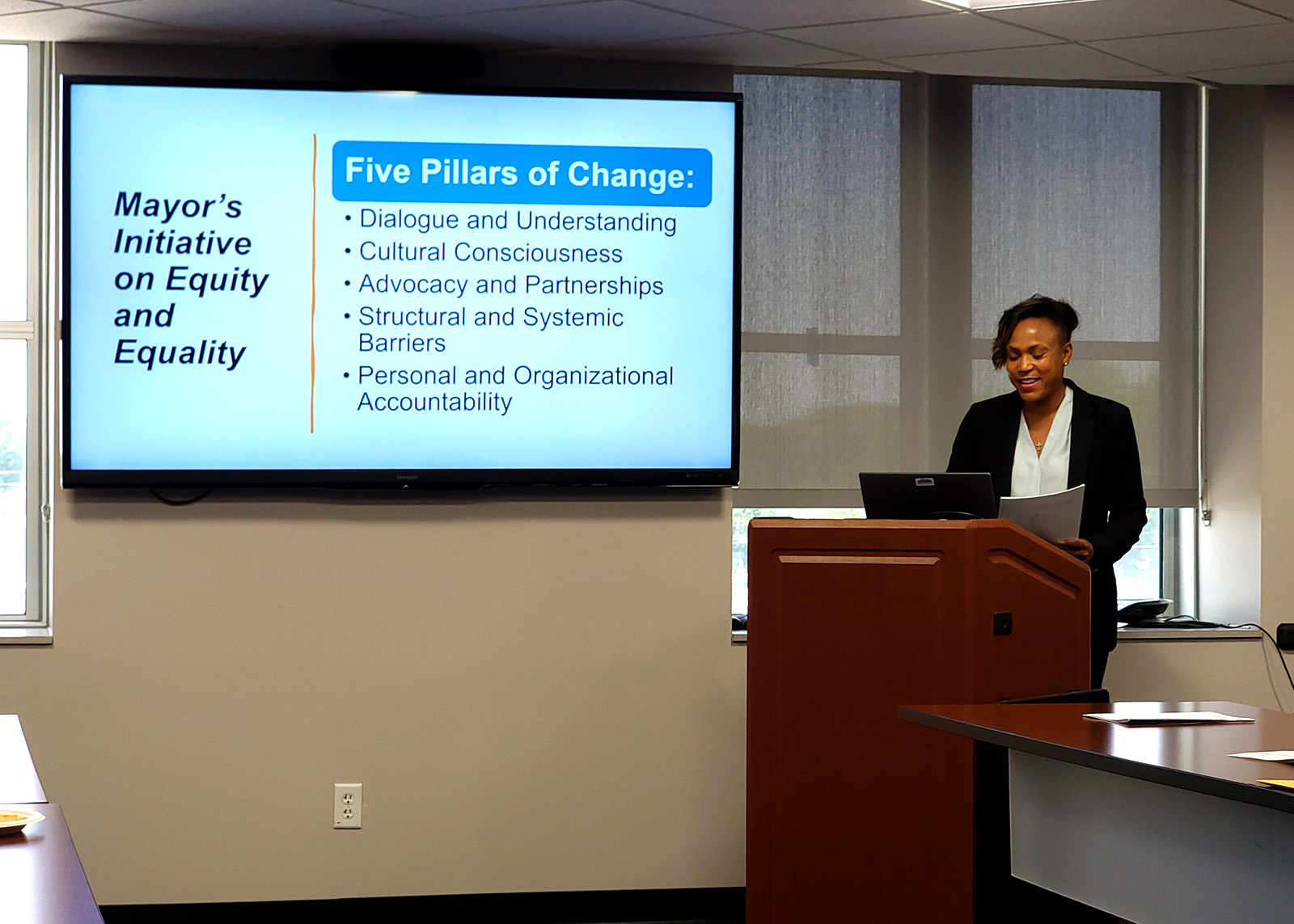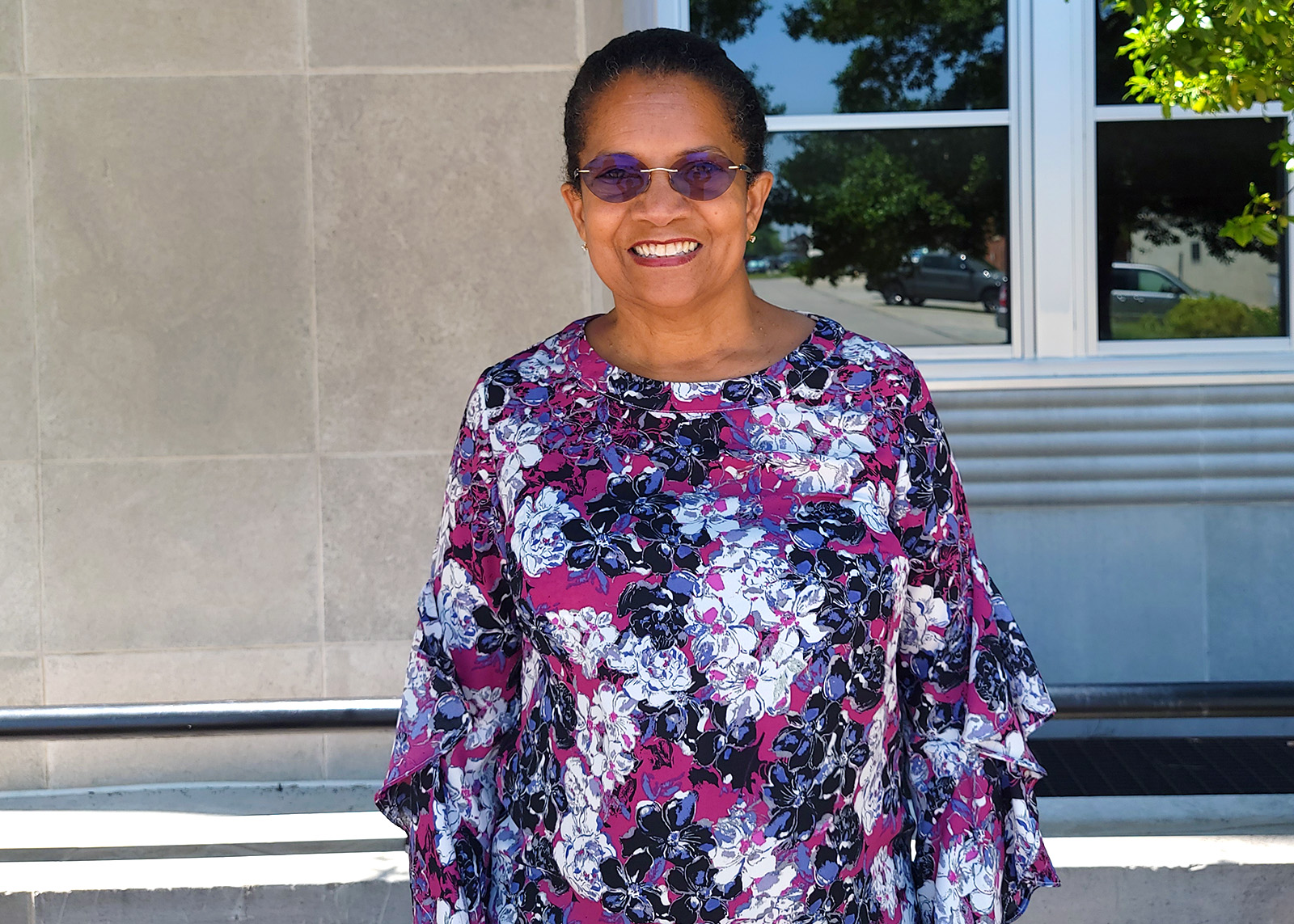In Springfield, a smaller population in poverty and an increase in college graduates indicate a positive trend for a city grappling with poverty levels well above state and national averages.
Prosper Springfield, an initiative charged with answering a call to action to reduce poverty and increase post-secondary education, delivered a comprehensive update detailing poverty data to the Springfield City Council at its June 20 meeting.
While Prosper Springfield still has work to do to reach its 2030 goals, director Francine Pratt urged council members to celebrate the progress that has been made, illustrated by a 4.6-percent reduction of people in poverty in Springfield between 2014 and 2022.
“This does not happen overnight,” Pratt said. “This only happens when you have a community that’s willing to collaborate and work together and make things happen. To see that we’ve had this steady decline, it shows that we’re doing the right things.”
What is Prosper Springfield?
After spending 18 months becoming educated on the causes and effects of poverty, the Impacting Poverty Commission created a community action report in 2015 that established Prosper Springfield.
The Impacting Poverty Commission's original goals — to reach by 2025 — were:
- Reduce poverty by five percentage points.
- Increase post-secondary educational attainment (increase education beyond high school to 60 percent.)
While the initiative has been funded by Springfield organizations and businesses, including the Community Foundation of the Ozarks, the Musgrave Foundation and Charlie and Mary Beth O’Reilly, the Community Partnership of the Ozarks serves as the “backbone” of the collaborative.
Prosper Springfield gave reports annually beginning in 2017, when Pratt was brought on as director, until the COVID-19 pandemic, which delayed 2020 U.S. Census data, a major component of Prosper Springfield’s work. The latest update ecompasses data from 2020-2021, with 2022 highlights.
The Equity and Prosperity Commission will carry out Phase 2 for Prosper Springfield, and work towards new goals with the latest data, and information compiled from various other documents, including the Mayor’s Commission on Human Rights’ Diversity Assessment, Community Focus Reports and the community action report, among others.

While Pratt has worked as the director for Prosper Springfield up to this point, Darline Mabins, the community diversity and equity director of CPO will take the lead on the Equity and Prosperity Commission.
In Phase 1, Pratt focused on data collection and looking at existing programs, and in Phase 2, Mabins will lead the new commission in “aligning systems with the lens of equity.”
Pratt attributes positive data to collaboration, inclusion
Prosper Springfield’s latest report shows progress has been made on the 2015 community goals, with the poverty reduction in 2023 just shy of meeting or exceeding the 2025 target date.
In 2014, the poverty rates in Springfield and Greene County were 25.7 percent and 19 percent, respectively; last year, it was 21.1 percent and 13.2 percent.
In order to further understand who poverty was impacting the most, Prosper Springfield disaggregated the data by population subgroups. White residents in Springfield, who made up 148,715 of the city’s 169,724 people in 2021, had the second lowest poverty rate of any subgroup that year, at 19.8 percent.
Black residents had the highest poverty rate of any subgroup in Springfield in 2021, at 34.8 percent.

Compared to 15 other benchmark cities, between the 2014 and 2017-2021 U.S. Census American Community Surveys, Springfield had the fourth highest poverty rate percentage reduction difference of 7.5 percent. Only Knoxville, Tennessee, Grand Rapids, Michigan and Kalamazoo, Michigan had larger decreases.
Springfield still had the fifth worst poverty rate among the cities, and the lowest median income at $39,991, according to the 2017-2021 survey.
Underemployment, hidden workers and the poverty line
In comparing the survey data to national poverty guidelines, Pratt used 2021 thresholds from the U.S. Department of Health and Human Services, and illustrated how people above the poverty line in Springfield could still struggle to pay average expenses.
Ultimately, Pratt said that the best way to continue moving Springfield’s poverty rate in the downward direction was to continue focusing on post-secondary education attainment, which increased in Greene County between 2019 and 2021.
Additionally, the number of Springfield residents 25 years and older with an associate, bachelor’s or graduate or professional degree increased from 32.4 percent to 37 percent between 2019 and 2012, according to American Community Survey statistics.
In order to continue to increase post-secondary education attainment, and subsequently decrease poverty, Pratt stressed the need to address underemployment in Springfield.

“That’s why we try to emphasize employers, in a sense trying to grow their own, create these apprenticeship programs, offer more opportunities so that those folks can move up and then they can fill the entry level and kind of keep this system going, which is very critical,” Pratt told council members.
In addition to addressing underemployment, Pratt suggested employing hidden workers as a way to help bolster Springfield’s talent pool and workforce.
“Post-secondary education” is defined broadly to include anything from an advanced degree to a certificate to an industry-recognized credential.
“A one-sized approach is not going to be effective,” Pratt said. “These approaches have to be culturally-based, they have to be intersectionality-based, but we can do this if we’re willing to give that opportunity.”
Pratt emphasized that the information Prosper Springfield gathered is based on facts. The initiative uses U.S. Census data as a baseline for identifying Springfield’s poverty levels, as well as data from the U.S. Bureau of Labor Statistics and the Lumina Foundation.
New set of goals ‘a little more challenging’
While Springfield is on pace to reach the 2025 poverty reduction target, Pratt admitted the Equity and Prosperity Commission’s 2030 goals would be more difficult to achieve.
“When the first goals were set, they were set without any data, and it was conservative,” she said.
With the data Prosper Springfield has gathered, the new goals, which are centered around population subgroups, will be “a little more challenging.”
Pratt told council members that about 10 percent of Springfield’s 35,800 people in poverty would find it difficult to move above the poverty threshold. It includes individuals with disabilities, college students who live off-campus with non-family members and adults 65 and older.
2030 goals include:
- 10 percent poverty rate reduction for each race/ethnic group.
- 10 percent poverty rate reduction for people with disabilities.
- 10 percent poverty rate reduction for populations with health disparities.
- 60 percent education attainment for all groups with target goals for African Americans/Blacks, Hispanics/Latinx and rural areas.
- 70 percent labor force participation for all groups with target goals for African Americans/Blacks, Hispanc/Latinx and rural areas.
Despite the challenge before them, Mabins said she believes the community will meet and exceed the new goals.
Pratt, too, expressed optimism, but said that reducing poverty and increasing post-secondary education in Springfield needed to be a “stretch goal.”

